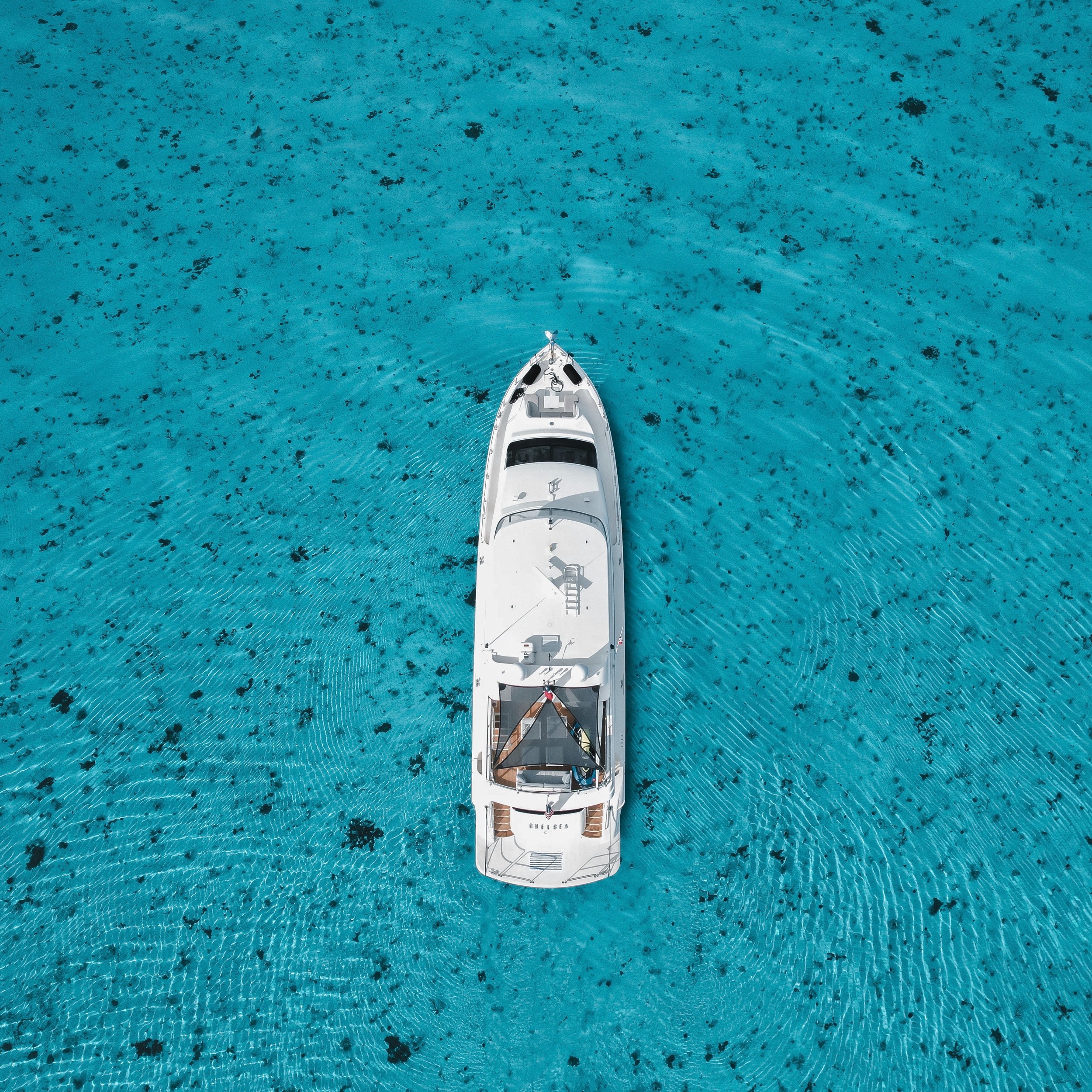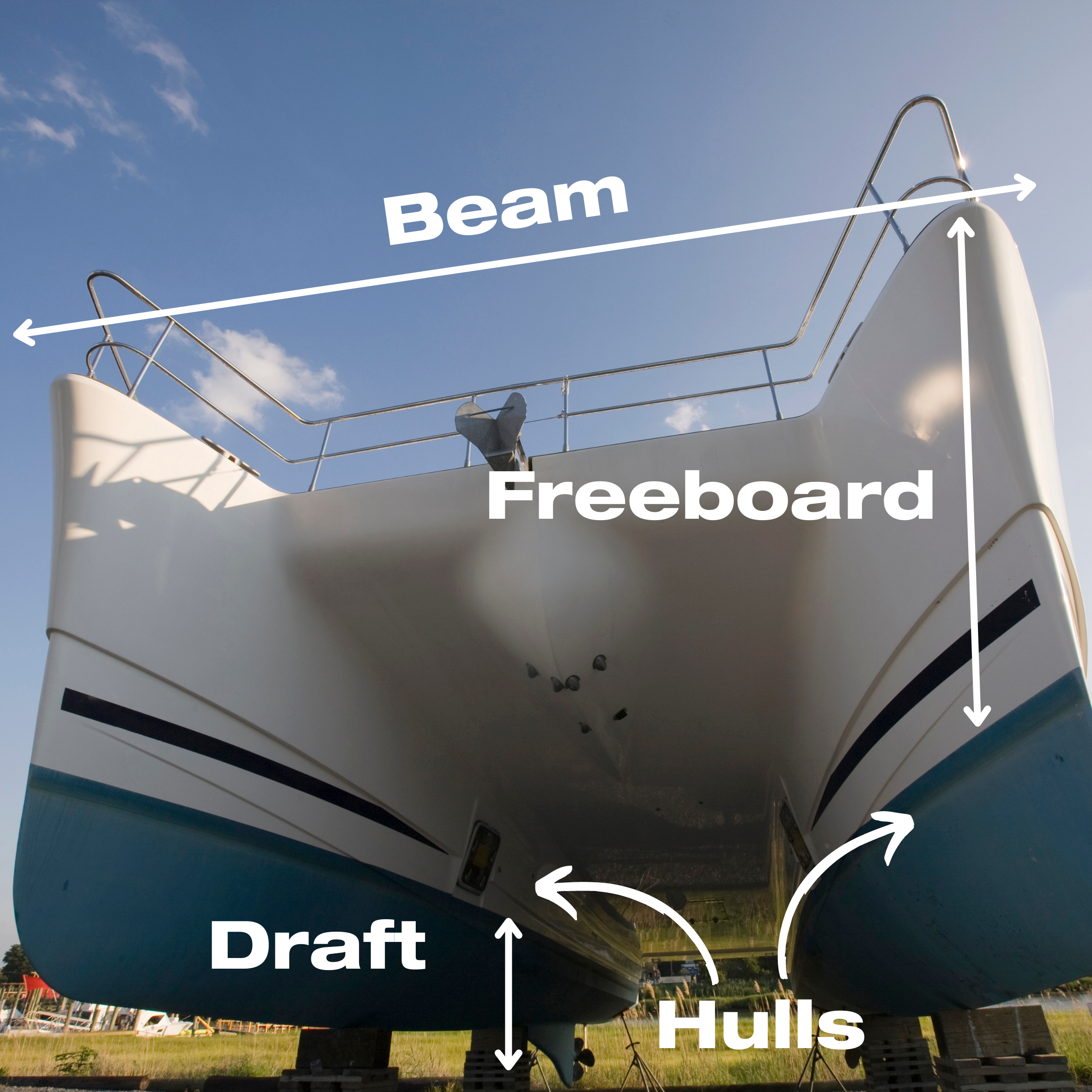PARTS OF A BOAT: BOAT ANATOMY 101
Want to take up boating? Start by learning the nautical terms used to indicate the parts of a boat. You’ll need to know these words before you go on a boat trip, as communication on a vessel is crucial. You can’t waste time trying to describe what you’re talking about; things happen fast.
BOAT ANATOMY
First, we’ll look at the boat parts you’ll find on both powerboats and sailing boats.
Hull
The body or shell of the vessel. A portion of it is submerged.
Deck
The flat surface on top of the hull. This is where you walk to get around the boat.
Transom
The back of a boat. It connects the two sides of the hull.
Gunwale or gunnel
The outermost top edge of a boat hull. This is where the deck and hull come together on most boats.
Beam
The width of the vessel at its widest point.
Waterline
The area of the hull that sits on the water. Often, you measure its length.
Draft
The distance between the waterline and keel. It determines the minimum depth of water required for the boat to float.
Freeboard
The distance between the waterline and the gunwale.
Bow
The front of the boat.
Stern
The back of a boat.
Port
When looking towards the bow, it’s the left side of the boat.
Starboard
When looking towards the bow, it’s the right side of the boat.
Forward
The area towards the bow.
Aft
The area at the stern of the boat.
Bilge
A compartment located in the lowest part of a boat’s hull. It often collects water, which is why you should install one or more bilge pumps.
Ballast
A heavy weight installed in the hull of a boat to improve its performance and stability. It’s typically made of metal or stone. Sometimes, water tanks can serve as ballast.
Cockpit
The area on deck from where you steer the boat. It’s often enclosed or protected to help you stay on board.
Console
A raised structure on the deck of a boat that holds the helm.
Helm
The steering station.
Wheel
The steering wheel of a boat.
Tiller
A stick or pole connected to the rudder, which allows you to steer a boat. Smaller and older boats tend to have a tiller, rather than a wheel.
Rudder
A vane attached to the hull or transom of a vessel, which can steer a boat via a wheel or tiller. If you’re confused about the difference between a rudder, tiller, and wheel, check out this blog post.
Cabin
A “room” inside a boat. A cabin can be the whole area inside the hull of a boat, or a specific “room” enclosed in that area.
Flybridge or flying bridge
An area located on top of a boat’s cabin. It usually contains the steering station and some seating. It offers great visibility and it’s an excellent spot to cool down in the wind.
Livewell
A tank where you can store bait or fish while out on the water.
Hatch
An opening in the deck or cabin which allows light and air to get into the hull.
Navigation lights
The lights mounted around the boat, which allow other vessels to see it at night. We talk about nav lights in more detail in this article.
Propeller
A rotating mechanical device with blades which propels a boat.
Bulkhead
A wall located inside the hull of a boat, which can provide structural support or divide different cabins.
Galley
The kitchen. This is where a cooker and sink are located inside a boat. The cooker or oven are typically installed on a gimbal, so the pans stay level and don’t fall off.
Saloon
The living room. It’s an area where you can relax. It usually features a dinette with settees (sofas/couches) and a dining table.
Heads
The bathroom. On boats, you’ll typically find an electric, manual, or composting toilet. Newer and bigger boats will even have a shower.
Bimini
A canvas top that provides protection from the elements.
Hardtop
A fixed, solid alternative to a bimini usually made of fiberglass.
Berth
A bed or bunk. If it’s located in the bow of a boat, it’s called a v-berth.
Swim platform
A structure attached to the transom of a boat, which allows you to easily get in and out of the water.
Lines
The ropes you use to handle the boat.
Cleats
A fitting made of metal, plastic, or wood on which you can tie a line or loop. It’s designed to allow you to tie the boat to a dock.
Fenders or bumpers
These are “cushions” made of plastic and filled with air, which stop a boat from rubbing against or hitting hard a dock or another vessel.
PARTS OF A SAILBOAT
There are specific nautical terms that only apply to sailboats and motorsailers. These vessels are different from powerboats, so they are equipped with some extra gear to allow them to use the wind as a means of propulsion.
Let’s look at the fundamental parts of a sailboat.
Keel
A lengthwise structure attached to the base of a boat, which keeps it upright and improves stability. Yachts that lose their keel capsize.
Mast
The spar that stands vertically at the centre-line of a sailboat. It supports the sails.
Sails
These are pieces of canvas extended from the mast. They are designed to catch the wind and propel the sailboat. If you’d like to read more about the different types of sails you can install on a sailboat, head over to this article.
Boom
A pole that’s attached to the mast and extends the foot (bottom edge) of the mainsail.
Rigging
The wires, cables, or lines found on a sailboat. The running rigging is made up of the lines you use to handle the boat and sails. The standing rigging is fixed in place and holds up the mast.
Winch
A drum-shaped device around which you can wrap lines to make it easier to sheet the sails.
Traveler
A device that allows you to change the spot in which the mainsheet tackle connects to the boat.
Companionway
A hatchway with steps which leads you inside a sailboat (“down below”).
When it comes to sailboats, there are many more nautical terms that describe the parts of a sail, a specific wire of the standing rigging, a type of line, and more. So if you plan to take on sailing, you’ll need to learn a lot more nautical terminology.
Now that you’re familiar with the anatomy of a boat, you can start looking at boating courses and sailing classes near you. Your instructor and peers will probably be impressed with your knowledge and you’ll be able grasp things a lot faster.


